Holistic approach key for logistical planning
How do you assess the prevailing issues within Vietnam’s logistics sector, and how do they impact the industry at large?
The logistics sector in Vietnam, crucial to economic vitality, is grappling with substantial challenges stemming from pivotal planning discrepancies, which are creating significant bottlenecks and adversely impacting the nation’s economic development.
 |
| Pham Thi Bich Hue, chairwoman of Western Pacific Group |
A primary manifestation of this is the evident misalignment between the designated planning of logistics centres and the real needs and locations of enterprises. Industrial zones (IZs) are often surrounded by consumption sources and goods, but logistics centres are paradoxically designated in disparate localities. This incongruity results in profound inefficiencies, as logistics-designated lands are often not in demand by businesses, leading to a mismatch between resource allocation and actual business needs.
This asymmetrical planning has resulted in Vietnam incurring elevated logistical costs compared to neighbouring countries like Singapore, where logistics costs are below two digits, while in Vietnam, they exceed 20 per cent. The disparity significantly constrains the nation’s appeal when seeking foreign investments.
Additionally, the sector is impeded by ambiguous legal frameworks. Despite government initiatives over the years to develop logistics centres nationwide this decade, there’s a conspicuous lack of explicit legal definitions and regulations surrounding logistics centres, complicating practical applications and creating substantial impediments for businesses.
As Western Pacific Group initiates the construction of a logistics centre in Ho Chi Minh City, we are confronted with ambiguous legal pathways, which lack both clarity and transparency, posing significant challenges and complicating practical applications.
Our efforts to develop logistics centres within current planning frameworks expose us to various levels of logistics centres, yet legal texts remain unclear in their definitions and categorisations of such centres. This lack of clarity leaves numerous provinces and cities uncertain about land categorisation for logistics centres, with some designating it for industrial, service, warehouse, or even real estate purposes, leading to widespread complications and inconsistencies across regions for businesses.
In light of the current constraints within the logistics sector, what strategic solutions and policy reforms would you recommend for enhancing its efficiency and competitiveness?
I believe that a synchronised and holistic approach to infrastructural and logistical planning is paramount. Aligning logistics services with IZs and ensuring coherent infrastructural development can pave the way for reduced transportation and logistics costs, streamlined operations, and enhanced competitiveness.
Currently, as provinces and cities are formulating comprehensive plans for towards 2030, it’s imperative that industrial land allocation aligns seamlessly with logistics service land.
Logistics centres need to be strategically positioned to optimise transportation costs and time, ensuring that the sector can operate with maximal efficiency and minimal expenditure.
Regarding infrastructure bottlenecks, the government has been actively investing in transport infrastructure nationwide.
I have faith that, in the coming years, bottlenecks in transport infrastructure will be resolved. Effective resolutions in transport and logistics infrastructure planning will undoubtedly alleviate transportation costs and reduce overall logistics expenses.
As for the legal corridor, I contend that the logistics sector is exceedingly broad, encapsulating myriad tasks and thus, use of the term “logistics” may potentially confound state management agencies. Thus, it’s crucial for the government to enact clear, distinct policies and centralise them under a unified managing body.
This would prevent the prevailing vagueness emanating from multiple departments’ management, enabling businesses to implement them more efficiently. If clear and specific regulations are established, businesses investing in logistics centres will have a clearer understanding of land classification, facilitating effective investment planning.
Moreover, I propose the government should segregate logistics infrastructure development, like IZs and warehouses, from real estate classifications to foster investment in logistics centres. Current classifications under real estate are constrained by the lending limits of this sector. Investing in a logistics centre project requires substantial initial costs with returns realised over 50 years, unlike the immediate revenue model of real estate.
Therefore, reclassifying logistics service infrastructure outside the real estate sector could be the key to unlocking investment opportunities in logistics centres nationwide.
I strongly urge the regulatory body to stimulate investments and foster an environment conducive to logistical advancements, especially in key regions, by providing easier access to capital and ensuring sustained returns on investments over extended periods. Roads, bridges, ports, and warehouses are the lifeblood of the economy, and state stimulation could potentially create a ripple effect, enticing more investors.
In anticipation of governmental resolutions to existing logistical bottlenecks, what strategies should logistics businesses deploy to navigate through the prevailing challenges?
While governmental interventions are pending, businesses must proactively embrace flexible, innovative solutions to navigate through the existing bottlenecks. For Western Pacific, we’ve championed adaptable and optimised models like the logistics industrial cluster (LIC), a model I’ve deeply researched and find substantially fitting in the current circumstances.
It represents our endeavour to find opportunities in adversity and carve our unique pathway, offering a solution that aligns with trends adopted by logistically advanced countries.
With Vietnam positioned as a burgeoning hub for foreign investment and maintaining robust macroeconomic policies, the government is ardently endeavouring to foster a conducive business environment. I am confident that the LIC model will significantly alleviate current issues.
The model’s coherence with industry and logistics represents a symbiotic ecosystem, ensuring that businesses partake in a system designed to optimise cost, time, and logistical efficiency, particularly with the integration of digital technologies.
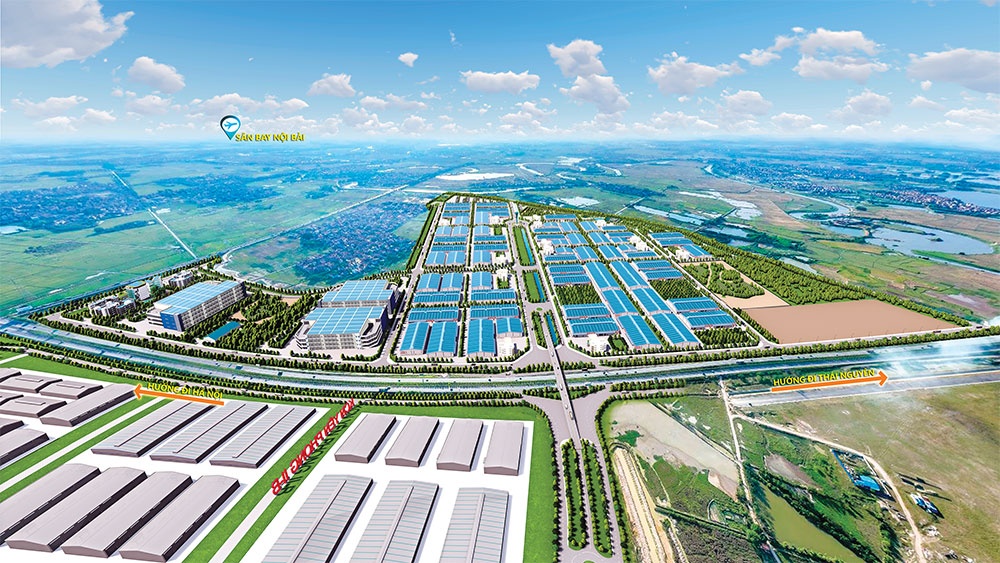 |
| Yen Phong II A Industrial Park and Logistics Centre in Bac Ninh is a strategic project in the LIC ecosystem |
Could you expand on the tangible benefits that logistics companies could gain by investing in the LIC model?
Businesses integrating into the LIC ecosystem are assured of mutualistic benefits. Strategic land allocation from the inception, positioning factories and logistic centres proximal to ports, fundamentally addresses the elemental challenges related to cost and transit times.
I believe that a synchronous application of digital technologies and streamlined operational activities under this model can substantially mitigate costs across the ecosystem. I assure businesses that leveraging Western Pacific’s comprehensive ecosystem will result in a minimum of a 20 per cent cost reduction in comparison to utilising fragmented services outside this ecosystem.
The strategic proximity of manufacturing units to ports and the accrual of myriad value-added benefits within this shared ecosystem further augment its appeal.
Western Pacific Group is navigating through logistical bottlenecks by leveraging the LIC model, aiming for synchronised planning between logistics infrastructure and IZs, thus optimising transportation costs, time, and manpower, and bolstering multinational investments. This approach signals a shift towards integrated, efficient, and cost-effective logistical solutions, reflecting the evolving trends in the global logistics sector and serving as a benchmark for logistical advancements in Vietnam.
| The logistics industrial cluster is a complex ecosystem from Western Pacific Group, striving for integrated planning between logistics infrastructure including international ports, inland ports, transport centres; bonded warehouses, airfreight warehouses, and industrial areas, among others. The group’s trailblazing approach aims to recalibrate logistical and infrastructural paradigms, optimising operational efficiency and cost-effectiveness, and promises to set new benchmarks in global logistical solutions, with the potential to draw in substantial multinational investments to Vietnam. |
What the stars mean:
★ Poor ★ ★ Promising ★★★ Good ★★★★ Very good ★★★★★ Exceptional
Related Contents
Latest News
More News
- PM sets January deadline for high-speed rail consultant (January 06, 2026 | 08:40)
- New decree spurs on PPP implementation (December 31, 2025 | 19:01)
- Global alliance develops $1 billion AI data centre network in Vietnam (December 30, 2025 | 10:08)
- Standing out in the Chinese outbound investment wave (December 29, 2025 | 10:29)
- Bright spots obvious in foreign investment mission (December 29, 2025 | 09:00)
- Ho Chi Minh City hits $8.37 billion in FDI (December 29, 2025 | 08:28)
- Vietnam and UK cooperation backs finance talent for IFCs (December 27, 2025 | 16:31)
- Global partnerships key to Vietnam’s IFC development (December 26, 2025 | 16:18)
- Vingroup pulls out of bid to invest in North-South high-speed railway (December 26, 2025 | 11:42)
- Strengthening supply chains through trade promotions and customs reform (December 24, 2025 | 14:00)

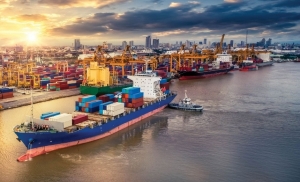
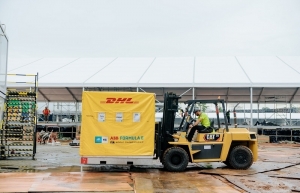
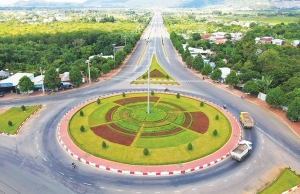
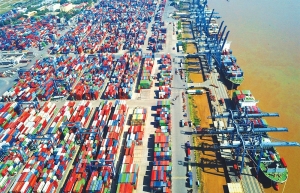


 Tag:
Tag:


















 Mobile Version
Mobile Version